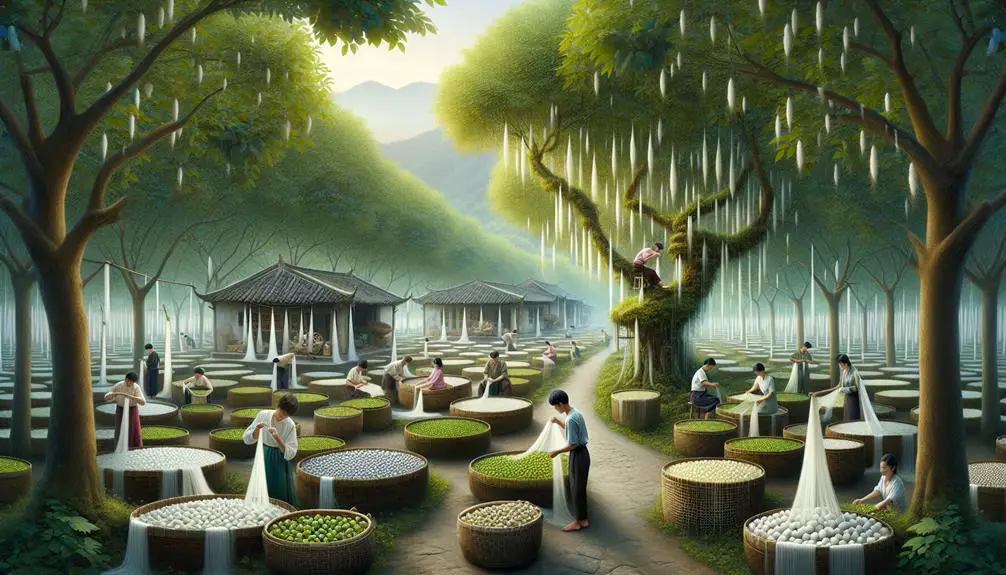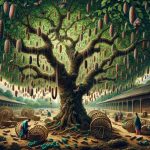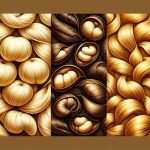When it comes to the finest silk in the world, the best quality originates from Mulberry Silkworms. Their exclusive diet of mulberry leaves creates a luxurious texture and exceptional durability. The silk production process is meticulous, ensuring high-quality. Want to learn more about the fascinating world of silk and its rich history, innovations, and global impact?
Table of Contents
Key Takeaways
- Best silk is made from Bombyx mori silkworms fed exclusively mulberry leaves.
- China, known for luxurious silk, produces 66% of the world's silk.
- Silk quality is influenced by sustainable production and minimal chemical intervention.
- Focus on silk grades like Grade 6A for superior strength and smooth texture.
- Silk's cultural significance and economic impact make it a coveted luxury fabric globally.
Origin of Mulberry Silkworms
Mulberry silkworms, known scientifically as Bombyx mori, have a captivating history dating back over 5000 years in the world of silk production. These remarkable creatures play a crucial role in the silk industry, producing some of the highest quality silk available. Their diet exclusively consists of mulberry leaves, which contributes to the luxurious texture and exceptional durability of the silk they produce. Mulberry silk is renowned for its softness and superior quality, making it highly sought after in the textile industry.
The silk produced by mulberry silkworms stands out among other types of silk, accounting for approximately 90% of the global silk production. Their unique diet not only results in high-quality silk but also guarantees that the final product possesses characteristics that are unmatched by other silks. It's no wonder that mulberry silkworms are considered the backbone of the silk industry, providing the world with a material that's both luxurious and durable.
Traditional Silk Production Process
Let's talk about how silk is made traditionally.
The silk production process involves understanding the silk worm life cycle, learning about silk harvesting techniques, and appreciating the silk weaving tradition.
It's fascinating to see how these elements come together to create the luxurious fabric that's silk.
Silk Worm Life Cycle
During the traditional silk production process, silkworms undergo a captivating four-stage life cycle, from egg to larva, pupa, and finally, adult moth. Silkworms are nurtured on a diet of mulberry leaves, which provide them with essential nutrients for their growth.
As they enter the pupal stage, silkworms spin protective cocoons made of delicate silk fibers. These cocoons are carefully harvested and boiled to extract the fine silk threads used in weaving luxurious fabrics. Remarkably, each cocoon can yield a continuous silk strand of up to an impressive 900 meters in length.
This intricate life cycle of silkworms isn't only essential to traditional silk production but also showcases the remarkable transformation these tiny creatures undergo in creating the coveted silk.
Silk Harvesting Techniques
When harvesting silk, we carefully unravel delicate cocoons to extract the precious silk fibers used in creating luxurious fabrics. This process is a fundamental step in traditional silk production, where the focus is on preserving the length and quality of the fibers. The extracted silk fibers are then spun into threads, ready to be woven into exquisite textiles. Mulberry silk, obtained from Bombyx mori silkworms, is the most sought-after type due to its fine texture and durability. Silk harvesting techniques have evolved over centuries, but the essence of cocoon unraveling and spinning remains consistent across different regions. The art of silk production truly showcases the intricate craftsmanship involved in every step.
| Traditional Silk Production |
|---|
| Harvesting Techniques |
| Mulberry Silk |
| Spinning Silk Fibers |
| Cocoon Unraveling |
Silk Weaving Tradition
Traditionally, silk weaving has been a treasured art form passed down through generations in countries renowned for their rich history in silk production, such as China, India, Italy, and Japan. These regions have perfected traditional silk production techniques to excellence, resulting in the creation of high-quality silk products that are sought after worldwide.
Skilled artisans play an essential role in maintaining the authenticity and excellence of these practices, ensuring that only the finest silk is produced. The intricate process of silk weaving involves meticulous attention to detail, from silk reeling to dyeing and weaving, culminating in the production of luxurious fabrics that are a proof of the mastery of these age-old traditions.
Historical Significance in China
In ancient China, the historical significance of silk production can't be overstated. Silk holds a special place in Chinese history, with its origins tracing back to the Neolithic period, approximately 8,500 years ago. Initially, silk was a luxury item exclusively reserved for the Emperors of China, symbolizing wealth, status, and power.
As time passed, silk production expanded beyond royalty and became an integral part of Chinese culture and trade. Chinese silk, known for its exceptional quality and craftsmanship, quickly became the most sought-after luxury item across the Eurasian continent in ancient times. The intricate weaving techniques and exquisite fabrics produced in China set the standard for silk production worldwide.
This historical significance not only shaped China's economy but also influenced global trade and cultural exchanges. The legacy of silk production in ancient China continues to be revered and celebrated to this day for its profound impact on the world.
Silk Production Innovation and Techniques
Amidst the rich history of silk production in China, innovative techniques have continually shaped the industry's evolution. Silk production involves intricate processes like reeling the silk from cocoons and demineralizing to enhance quality.
Here are three key advancements in silk production:
- Silk Weaving Advancements: Over thousands of years, silk weaving techniques have been refined to create intricate patterns and designs, showcasing the craftsmanship and skill of silk artisans in China.
- Silk Dyeing Techniques: The art of silk dyeing has evolved to include a wide range of vibrant colors and intricate patterns, with natural dyes being increasingly used to reduce environmental impact.
- Peace Silk Development: The concept of peace silk, which allows the silkworm to complete its life cycle naturally before harvesting the silk, has gained popularity for its ethical and sustainable approach to silk production.
These innovations highlight the continuous efforts to improve silk production techniques while staying true to the rich heritage and traditions of silk weaving in China.
Global Silk Industry Overview
China leads the way, producing about two-thirds of the world's silk. India, Uzbekistan, and Thailand are also key players in the silk market.
China's dominance in silk production has historical roots, with centuries of expertise in sericulture. The country's climate and vast mulberry plantations provide an ideal environment for silkworms to thrive. This has enabled China to maintain its leading position in the global silk industry for many years.
Silk Production Hotspots
Leading the global silk industry are key production hotspots distributed across various countries, each contributing uniquely to the diverse silk manufacturing landscape.
- China stands out as the top producer of silk globally, playing a pivotal role in shaping the industry.
- India, with its rich history of silk production, adds significant value to the global silk market.
- Italy's reputation for high-quality silk, especially from regions like Como, elevates the standard of luxury silk textiles worldwide.
These countries, along with others like Japan, contribute distinct techniques and styles to the global silk industry, showcasing the artistry and craftsmanship that define silk production on a global scale.
Market Trends in Silk
Exploring the ever-changing landscape of the global silk industry reveals intriguing market trends that shape the fabric's prominence and desirability. China remains the dominant player in silk production, accounting for about 66% of the world's supply, followed by India at 14%. However, countries like Uzbekistan, Brazil, Thailand, and Vietnam also play significant roles in the silk industry.
The global market trends indicate that silk continues to be a highly sought-after luxury fabric, valued at billions of dollars. This important economic sector not only drives commerce but also supports livelihoods and cultural traditions worldwide. Keeping abreast of these market dynamics is vital for understanding the evolving landscape of the silk industry and its impact on global trade and consumer preferences.
Environmental Impact of Silk Production
When considering the environmental impact of silk production, it's important to note that silk has a much lower ecological footprint compared to many synthetic fibers. Here are three key points to understand the eco-friendly aspects of silk production:
- Sustainable Practices: Mulberry silk, the most common type of silk, is produced sustainably. This involves silkworms feeding on mulberry leaves, a natural and renewable resource. This sustainable approach guarantees minimal environmental impact.
- Minimal Chemical Intervention: The silk production process mostly uses natural materials and involves mainly natural materials. This reduces the release of harmful substances into the environment, making silk a more environmentally friendly choice.
- Support for Environmental Conservation: Sustainable silk production practices not only support ethical sericulture but also contribute to broader environmental conservation efforts. Choosing silk produced through eco-friendly methods can help in promoting a healthier ecosystem and a more sustainable future for the industry.
Quality Factors in Silk Manufacturing
In silk manufacturing, the quality of the final product is paramount, with factors such as silk type and grading playing an essential role in determining the overall excellence of the fabric. Mulberry silk, sourced from the Bombyx mori silkworm, stands out as the best quality silk due to its exceptional strength and smooth texture.
When it comes to silk grades, Grade A is the most important quality, with Grade 6A silk being the finest available grade, known for its purity and unrivaled quality in the industry. Additionally, the momme weight of silk is vital; a higher momme weight indicates a denser and heavier fabric, symbolizing a more luxurious and durable product.
Mulberry silk, with its historical significance and reputation for superior quality, remains the top choice for luxurious silk products. Understanding these quality factors in silk production is key to appreciating and selecting the finest silk products available in the market.
Cultural Importance of Silk
Let's discuss why silk holds such cultural significance. Silk has played an essential role in shaping the culture and history of many societies, especially in China, where it originated. Here are three reasons why silk is culturally important:
- Silk Production in China: The art of silk production was first developed in ancient China during the Neolithic period. This early innovation not only revolutionized the textile industry but also became deeply intertwined with Chinese traditions and customs.
- Luxury Fabric: Silk was initially reserved for Chinese Emperors, symbolizing wealth, power, and prestige. As it spread through Chinese culture and trade, silk became synonymous with luxury, elegance, and sophistication.
- Silk Road: Chinese silk became a highly sought-after commodity along the Silk Road, a network of trade routes connecting East and West. This trade not only facilitated economic exchange but also promoted cultural interactions, influencing art, fashion, and societal norms across different regions.
Economic Impact of Silk Industry
As someone deeply interested in the world of commerce and industry, I've always found the economic impact of the silk industry to be a fascinating subject of study. The silk industry plays an essential role in the economies of countries such as China, India, and Italy, contributing immensely to their GDP.
Not only does silk production provide employment opportunities for thousands of individuals in both rural and urban areas, but it also supports local communities and businesses. The global silk market, valued at billions of dollars, demonstrates a steady demand for high-quality silk products.
Silk exports are important for the international trade relations of silk-producing countries, further boosting their economic growth and sustainability. By fostering a thriving silk farming and manufacturing sector, these nations are able to tap into the lucrative global market, creating a positive ripple effect on their overall economic well-being.
Frequently Asked Questions
Where Is the Best Silk in the World Made?
The best silk in the world is made in regions like China, Japan, and India. Factors like the diet of the silkworms, weaving techniques, and craftsmanship impact its quality. Each place offers unique silk experiences.
Where Does the Highest Quality Silk Come From?
When considering silk quality, China shines with its luxurious mulberry silk. It stands out for its strength, smoothness, and rich history. The Bombyx mori silkworm, a key player in Chinese silk production, weaves a tale of excellence.
Which Country Has the Best Silk Fabric?
For the best silk fabric, search no more than China. Their rich history and expertise in silk production make it a top choice. Chinese silk is synonymous with luxury and quality, capturing the hearts of silk enthusiasts globally.
Who Produces the Best Quality Silk?
When it comes to the best quality silk, I believe China stands out. Its rich history and expertise in silk production make it a top contender in creating exquisite silk fabrics loved worldwide for their superior quality.
- Why Is Red Velvet Not Red? - April 25, 2024
- How Do You Describe Velvet Fabric? - April 25, 2024
- How Strong Is Velvet? - April 25, 2024







